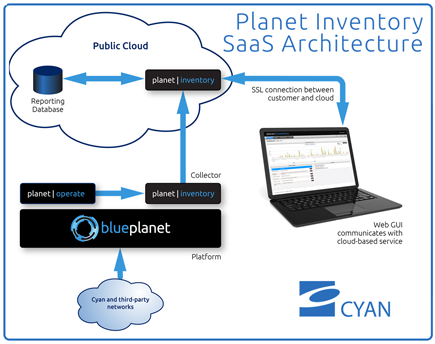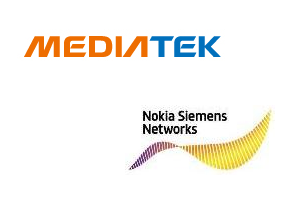Cyan introduced Planet Inventory, a multi-vendor network asset management application that forms part of the company's Blue Planet suite of software-defined network (SDN) applications.
 Planet Inventory provides physical asset and logical resource management in complex, multi-layer, multi-vendor environments, including Cyan’s Z-Series family of packet-optical transport platforms, as well as equipment from a broad range of third-party network equipment suppliers. It includes a dynamic set of tools to browse collected data, including an advanced search-driven Object Browser, as well as a dynamic Object Graph, showing the relationships between various object types, such as cards, ports and services.
Planet Inventory provides physical asset and logical resource management in complex, multi-layer, multi-vendor environments, including Cyan’s Z-Series family of packet-optical transport platforms, as well as equipment from a broad range of third-party network equipment suppliers. It includes a dynamic set of tools to browse collected data, including an advanced search-driven Object Browser, as well as a dynamic Object Graph, showing the relationships between various object types, such as cards, ports and services.
Cyan said accurate network asset information helps network operators reduce operating costs and accelerate service availability. Cyan’s Blue Planet SDN system provides a centralized orchestration service from which network operators can configure and manage network-wide services. Because Blue Planet has direct access to the equipment, the data it provides represents the true state of the network. Operators may use this network-side data for a variety of needs, including inventory management.
"Rapidly changing demands on networks is causing an increased emphasis on the performance and ROI of network assets. As a result, many network operators are asking for a clear, multi-vendor view of what is in their network and how it is performing. Our Planet Inventory application significantly improves their visibility," stated Michael Hatfield, Cyan's president,
Cyan will offer Planet Inventory both as a cloud-based service and as a locally-hosted implementation.
http://www.cyaninc.com
 Planet Inventory provides physical asset and logical resource management in complex, multi-layer, multi-vendor environments, including Cyan’s Z-Series family of packet-optical transport platforms, as well as equipment from a broad range of third-party network equipment suppliers. It includes a dynamic set of tools to browse collected data, including an advanced search-driven Object Browser, as well as a dynamic Object Graph, showing the relationships between various object types, such as cards, ports and services.
Planet Inventory provides physical asset and logical resource management in complex, multi-layer, multi-vendor environments, including Cyan’s Z-Series family of packet-optical transport platforms, as well as equipment from a broad range of third-party network equipment suppliers. It includes a dynamic set of tools to browse collected data, including an advanced search-driven Object Browser, as well as a dynamic Object Graph, showing the relationships between various object types, such as cards, ports and services.Cyan said accurate network asset information helps network operators reduce operating costs and accelerate service availability. Cyan’s Blue Planet SDN system provides a centralized orchestration service from which network operators can configure and manage network-wide services. Because Blue Planet has direct access to the equipment, the data it provides represents the true state of the network. Operators may use this network-side data for a variety of needs, including inventory management.
"Rapidly changing demands on networks is causing an increased emphasis on the performance and ROI of network assets. As a result, many network operators are asking for a clear, multi-vendor view of what is in their network and how it is performing. Our Planet Inventory application significantly improves their visibility," stated Michael Hatfield, Cyan's president,
Cyan will offer Planet Inventory both as a cloud-based service and as a locally-hosted implementation.
http://www.cyaninc.com



















